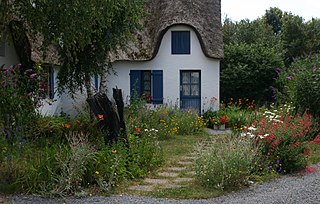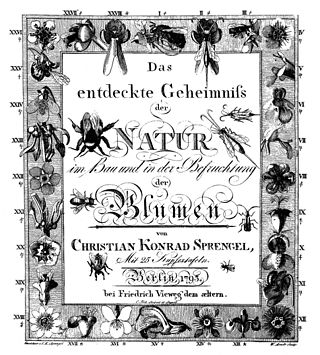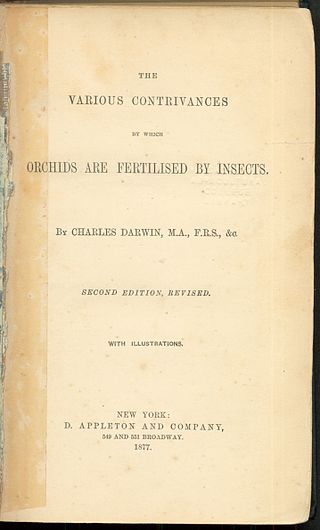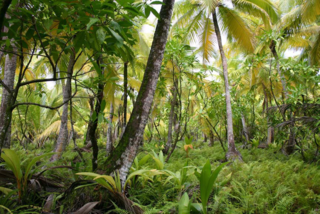Related Research Articles

Botany, also called plant science or phytology, is the branch of natural science and biology studying plants, especially their anatomy, taxonomy, and ecology. A botanist, plant scientist or phytologist is a scientist who specialises in this field. Nowadays, botanists study approximately 410,000 species of land plants, including some 391,000 species of vascular plants and approximately 20,000 bryophytes.

A wildlife garden is an environment created with the purpose to serve as a sustainable haven for surrounding wildlife. Wildlife gardens contain a variety of habitats that cater to native and local plants, birds, amphibians, reptiles, insects, mammals and so on, and are meant to sustain locally native flora and fauna. Other names this type of gardening goes by can vary, prominent ones being habitat, ecology, and conservation gardening.

Habitat conservation is a management practice that seeks to conserve, protect and restore habitats and prevent species extinction, fragmentation or reduction in range. It is a priority of many groups that cannot be easily characterized in terms of any one ideology.

Ecological succession is the process of change in the species that make up an ecological community over time.

Bromus tectorum, known as downy brome, drooping brome or cheatgrass, is a winter annual grass native to Europe, southwestern Asia, and northern Africa, but has become invasive in many other areas. It now is present in most of Europe, southern Russia, Japan, South Africa, Australia, New Zealand, Iceland, Greenland, North America and western Central Asia. In the eastern US B. tectorum is common along roadsides and as a crop weed, but usually does not dominate an ecosystem. It has become a dominant species in the Intermountain West and parts of Canada, and displays especially invasive behavior in the sagebrush steppe ecosystems where it has been listed as noxious weed. B. tectorum often enters the site in an area that has been disturbed, and then quickly expands into the surrounding area through its rapid growth and prolific seed production.

Charles Sutherland Elton was an English zoologist and animal ecologist. He is associated with the development of population and community ecology, including studies of invasive organisms.

Ecological restoration, or ecosystem restoration, is the process of assisting the recovery of an ecosystem that has been degraded, damaged, destroyed or transformed. It is distinct from conservation in that it attempts to retroactively repair already damaged ecosystems rather than take preventative measures. Ecological restoration can reverse biodiversity loss, combat climate change, support the provision of ecosystem services and support local economies. The United Nations has named 2021-2030 the Decade on Ecosystem Restoration.

Arundo donax is a tall perennial cane. It is one of several so-called reed species. It has several common names including giant cane, elephant grass, carrizo, arundo, Spanish cane, Colorado river reed, wild cane, and giant reed. Arundo and donax are respectively the old Latin and Greek names for reed.

Melilotus albus, known as honey clover, white melilot (UK), Bokhara clover (Australia), white sweetclover (US), and sweet clover, is a nitrogen-fixing legume in the family Fabaceae. Melilotus albus is considered a valuable honey plant and source of nectar and is often grown for forage. Its characteristic sweet odor, intensified by drying, is derived from coumarin.
The soil seed bank is the natural storage of seeds, often dormant, within the soil of most ecosystems. The study of soil seed banks started in 1859 when Charles Darwin observed the emergence of seedlings using soil samples from the bottom of a lake. The first scientific paper on the subject was published in 1882 and reported on the occurrence of seeds at different soil depths. Weed seed banks have been studied intensely in agricultural science because of their important economic impacts; other fields interested in soil seed banks include forest regeneration and restoration ecology.

Banksia attenuata, commonly known as the candlestick banksia, slender banksia, or biara to the Noongar people, is a species of plant in the family Proteaceae. Commonly a tree, it reaches 10 m (33 ft) high, but it is often a shrub in drier areas 0.4 to 2 m high. It has long, narrow, serrated leaves and bright yellow inflorescences, or flower spikes, held above the foliage, which appear in spring and summer. The flower spikes age to grey and swell with the development of the woody follicles. The candlestick banksia is found across much of the southwest of Western Australia, from north of Kalbarri National Park down to Cape Leeuwin and across to Fitzgerald River National Park.

Natural landscaping, also called native gardening, is the use of native plants including trees, shrubs, groundcover, and grasses which are local to the geographic area of the garden.

In biogeography, a native species is indigenous to a given region or ecosystem if its presence in that region is the result of only local natural evolution during history. The term is equivalent to the concept of indigenous or autochthonous species. A wild organism is known as an introduced species within the regions where it was anthropogenically introduced. If an introduced species causes substantial ecological, environmental, and/or economic damage, it may be regarded more specifically as an invasive species.

Christian Konrad Sprengel was a German naturalist, theologist, and teacher. He is most famous for his research on plant sexuality. Sprengel was the first to recognize that the function of flowers was to attract insects, and that nature favored cross-pollination. Along with the work of Joseph Gottlieb Kölreuter he set the foundations for the modern study of floral biology and anthecology, but his work was not widely recognized until Charles Darwin examined and confirmed several of his observations almost 50 years later; see Fertilisation of Orchids (1862).

Lambertia formosa, commonly known as mountain devil, is a shrub of the family Proteaceae, endemic to New South Wales, Australia. First described in 1798 by English botanist James Edward Smith, it is the type species of the small genus Lambertia. It is generally found in heathland or open forest, growing in sandstone-based soils. It grows as a multistemmed shrub to around 2 m (7 ft) with a woody base known as a lignotuber, from which it regrows after bushfire. It has stiff narrow leaves, and the pink to red flowerheads, made up of seven individual tubular flowers, generally appear in spring and summer. It gains its common name from the horned woody follicles, which were used to make small devil-figures.

A weed is a plant considered undesirable in a particular situation, growing where it conflicts with human preferences, needs, or goals. Plants with characteristics that make them hazardous, aesthetically unappealing, difficult to control in managed environments, or otherwise unwanted in farm land, orchards, gardens, lawns, parks, recreational spaces, residential and industrial areas, may all be considered weeds. The concept of weeds is particularly significant in agriculture, where the presence of weeds in fields used to grow crops may cause major losses in yields. Invasive species, plants introduced to an environment where their presence negatively impacts the overall functioning and biodiversity of the ecosystem, may also sometimes be considered weeds.

Fertilisation of Orchids is a book by English naturalist Charles Darwin published on 15 May 1862 under the full explanatory title On the Various Contrivances by Which British and Foreign Orchids Are Fertilised by Insects, and On the Good Effects of Intercrossing. Darwin's previous book, On the Origin of Species, had briefly mentioned evolutionary interactions between insects and the plants they fertilised, and this new idea was explored in detail. Field studies and practical scientific investigations that were initially a recreation for Darwin—a relief from the drudgery of writing—developed into enjoyable and challenging experiments. Aided in his work by his family, friends, and a wide circle of correspondents across Britain and worldwide, Darwin tapped into the contemporary vogue for growing exotic orchids.

Plant ecology is a subdiscipline of ecology that studies the distribution and abundance of plants, the effects of environmental factors upon the abundance of plants, and the interactions among plants and between plants and other organisms. Examples of these are the distribution of temperate deciduous forests in North America, the effects of drought or flooding upon plant survival, and competition among desert plants for water, or effects of herds of grazing animals upon the composition of grasslands.

Das entdeckte Geheimnis der Natur im Bau und in der Befruchtung der Blumen by Christian Konrad Sprengel was published in 1793, but received little acclaim during the author's lifetime. Sprengel's ideas were rejected by other naturalists when it was published, but the importance of this work was duly appreciated by Charles Darwin some sixty years later. Darwin's use of Sprengel's ideas and reference to this book in the seminal work on the Fertilisation of Orchids established Sprengel's book as one of the most important works in the fields of floral biology and pollination ecology and its author as a founding father of these fields.

Grevillea johnsonii, commonly known as Johnson's grevillea or Johnson's spider flower, is a species of flowering plant in the family Proteaceae and is endemic to New South Wales. It is a shrub with divided, needle-like leaves and red to orange flowers, and grows in rocky places.
References
- ↑ "Ken Thompson". Granta.
- 1 2 "Meet the Editors:Ken Thompson". Functional Ecology. 3 December 2018.
- 1 2 3 4 5 6 7 "Ken Thompson, Botanist". Modern Mint. 18 March 2014.
- ↑ Jim Chatfield (March 6, 2021). "Plant Lovers' Almanac:Ain't nature grand?". Akron Beacon Journal.